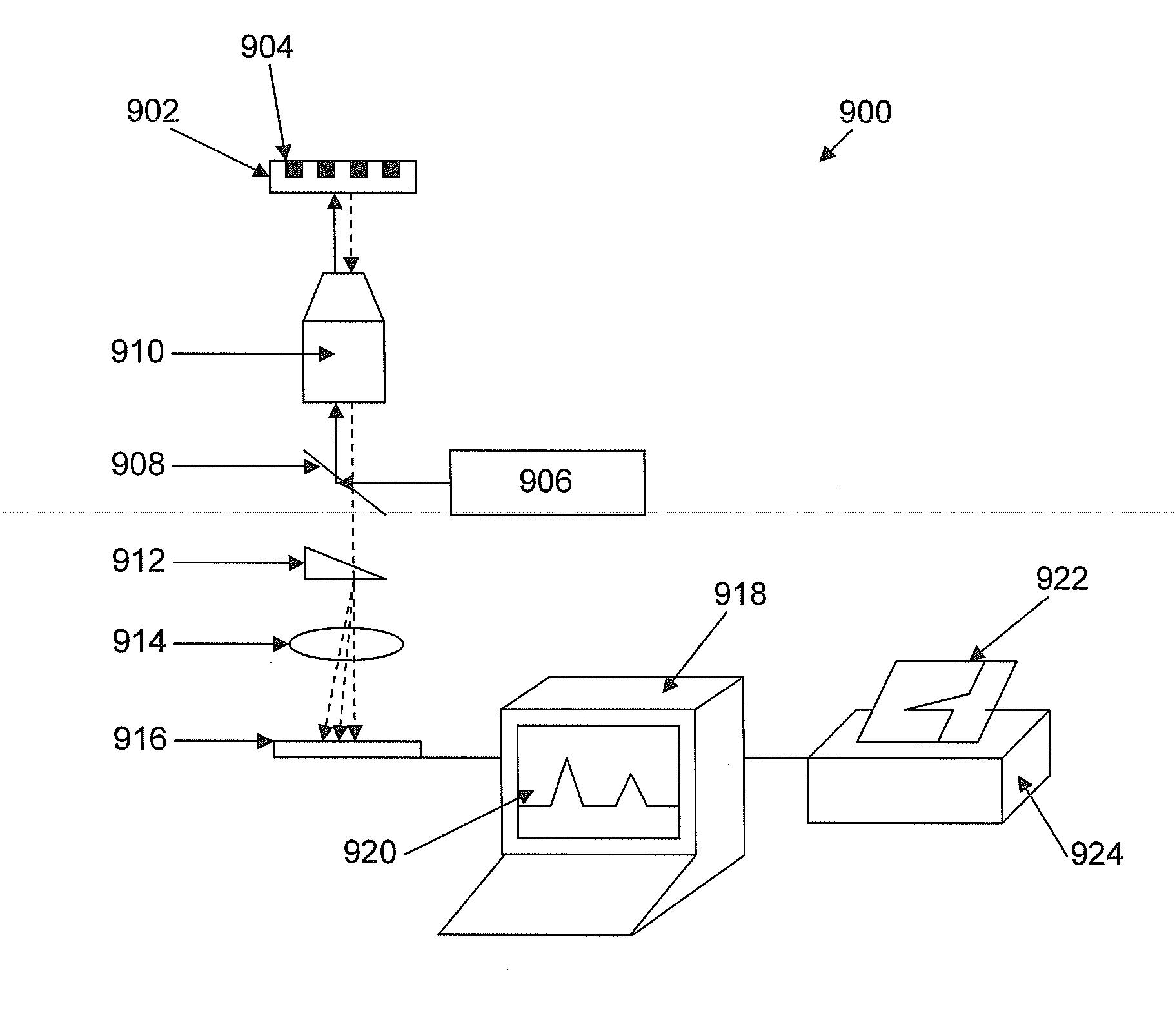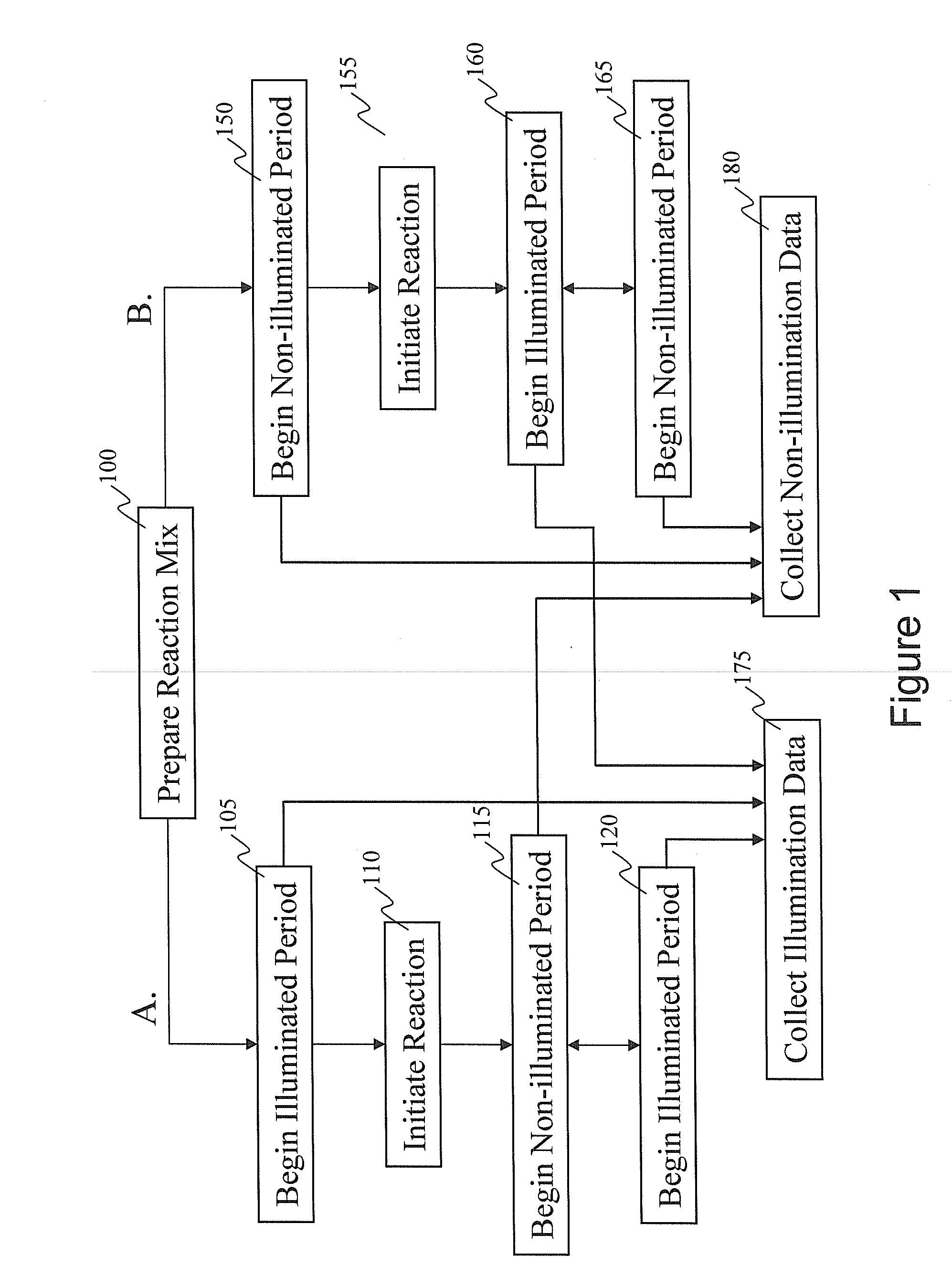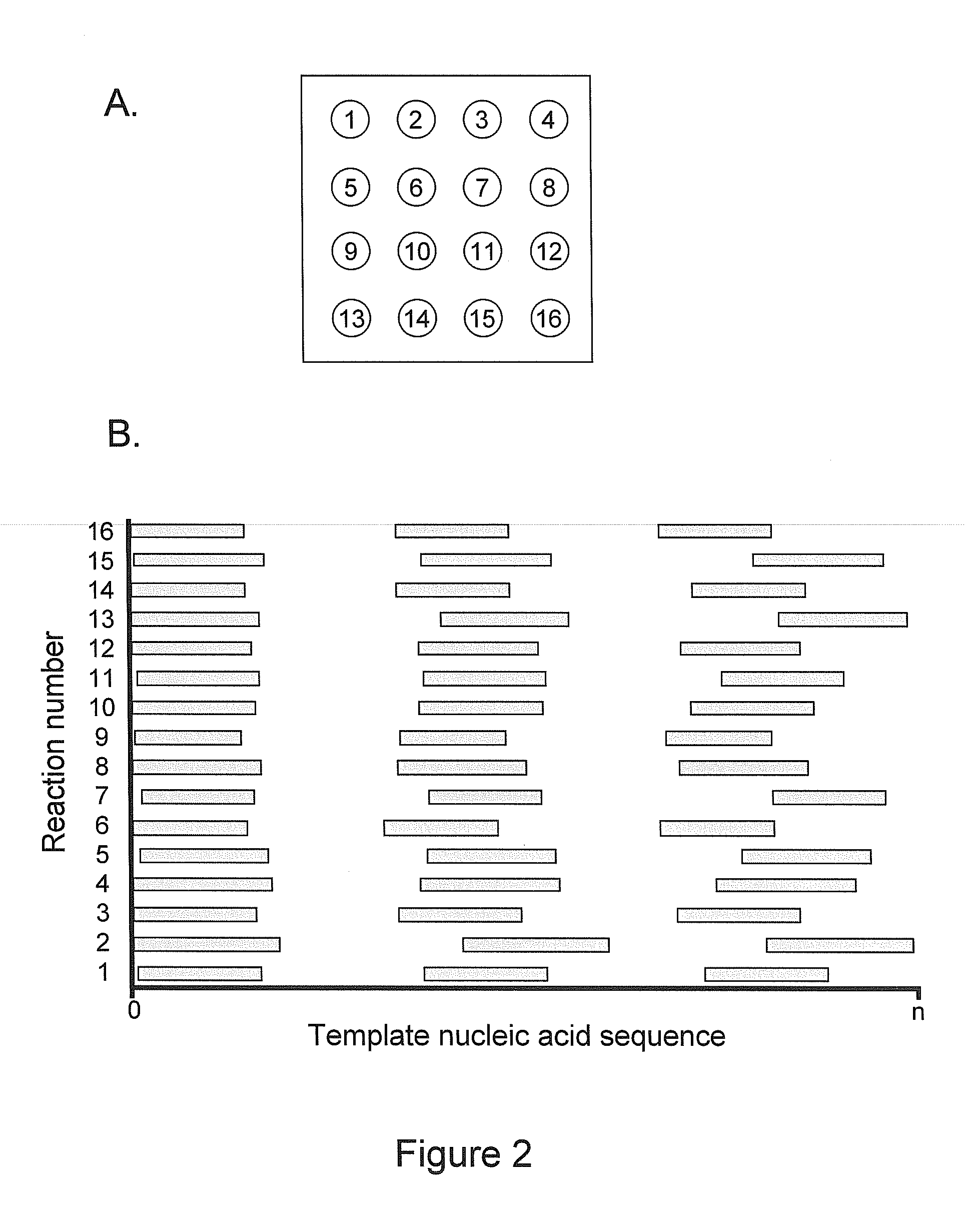Intermittent detection during analytical reactions
a technology of intermittent detection and reaction, applied in the direction of material analysis, chemical analysis, instruments, etc., can solve the problem of reducing the ability to obtain sequence data from a second portion of the template nucleic acid, and achieve the effect of avoiding or at least reducing damage and increasing the flexibility of investigators
- Summary
- Abstract
- Description
- Claims
- Application Information
AI Technical Summary
Benefits of technology
Problems solved by technology
Method used
Image
Examples
example 1
VI. EXAMPLE 1
Intermittent Illumination of a Single Molecule Sequencing-By-Synthesis Reaction
[0162]A nucleic acid template was provided that comprised a double-stranded region and two single-stranded linker portions at each end. The first linker portion connected the 3′ end of the sense strand with the 5′ end of the antisense strand, and the second linker portion connected the 3′ end of the antisense strand with the 5′ end of the sense strand. This template was designed to form a single-stranded circle of approximately 500 bases when the double-stranded region was opened (e.g., by heat denaturization, helicase activity, etc.), and is sometimes referred to as a SMRTbell™ template. A plurality of this nucleic acid template was incubated with polymerases, primers, and other reaction components to allow formation of polymerase-template complexes. (See, e.g., Korlach, J., et al. (2008) Nucleosides, Nucleotides and Nucleic Acids, 27:1072-1083; and Eid, J. (2009) Science 323:133-138.) The c...
PUM
| Property | Measurement | Unit |
|---|---|---|
| damage threshold | aaaaa | aaaaa |
| damage threshold | aaaaa | aaaaa |
| damage threshold | aaaaa | aaaaa |
Abstract
Description
Claims
Application Information
 Login to View More
Login to View More - R&D
- Intellectual Property
- Life Sciences
- Materials
- Tech Scout
- Unparalleled Data Quality
- Higher Quality Content
- 60% Fewer Hallucinations
Browse by: Latest US Patents, China's latest patents, Technical Efficacy Thesaurus, Application Domain, Technology Topic, Popular Technical Reports.
© 2025 PatSnap. All rights reserved.Legal|Privacy policy|Modern Slavery Act Transparency Statement|Sitemap|About US| Contact US: help@patsnap.com



